Which sensor type or measurement principle (magnetic, ultrasound, time of flight...) would best fit the following requirements (i.e. worth trying first)? I am asking because while reading I got confused about inherent physical/methodological vs. just model properties regarding resolution, beam width/angle etc. An answer would be e.g. a summary of sensor types (magnetic, ultrasound...) in terms of typical data regarding "beam" angles and meaningful working distance ranges for a precision of < 2 cm, or a creative idea that solves the problem.
The purpose is to measure the distance (range: about 0 - 75 cm, precision < 2 cm) between two objects (blue and purple circle), which are moving? Important:
- it should not rely on direction/rotation (i.e. the objects can turn in 3D space, each up to about +/- 60°, curved gray angle in figure).
- stability over time is much more important than absolute precision. I can live with a stable error of few centimeters, but there should be little drift.
(The initial offset and further difference caused by turning the surface-mounted sensor(s) does not matter.)
As an example, think of your hands moving around in 3D space, and I am intersted in the distance (not necessarily the exact x/y/z position), and whether the movements and the minimal distance become larger or smaller over time (minutes to hours).
Technical limitations: Sampling rate should be in the range of milliseconds (> 20/s if possible). Ideally (but not as an absolute requirement), the measurement would not be affected by an optical barrier such as clothes. It should all be wearable at least in a reserach context (i.e. few centimeters, wireless, data can be stored transferrd for analysis in the evening), e.g. operated by a small Arduino with SD card.
So far, I looked at magnetic, ultrasound and optic sensors, but I am afraidf that they would depend too much on the angle between objects. The only suggestion I found so far was to use multiple sensors in a circular shape as workaround (by A. Gosh) (which would make it more complicated), and to use some 3D rectangular sender/receiver coils (I don't even understand what I should google for to learn more or buy them - happy for recommendations). Maybe a magnetic sensor/Hall effect sensor would work, if a more or less circular homogemous magnetic field could be achieved by a small but strong magnet? I am happy for ideas.
I want to distinguish the following: green vs brown movement curves are from 2 subjects, one (brown) with constant fluctuations, one (green) with also fluctuating, but increasing distance):

